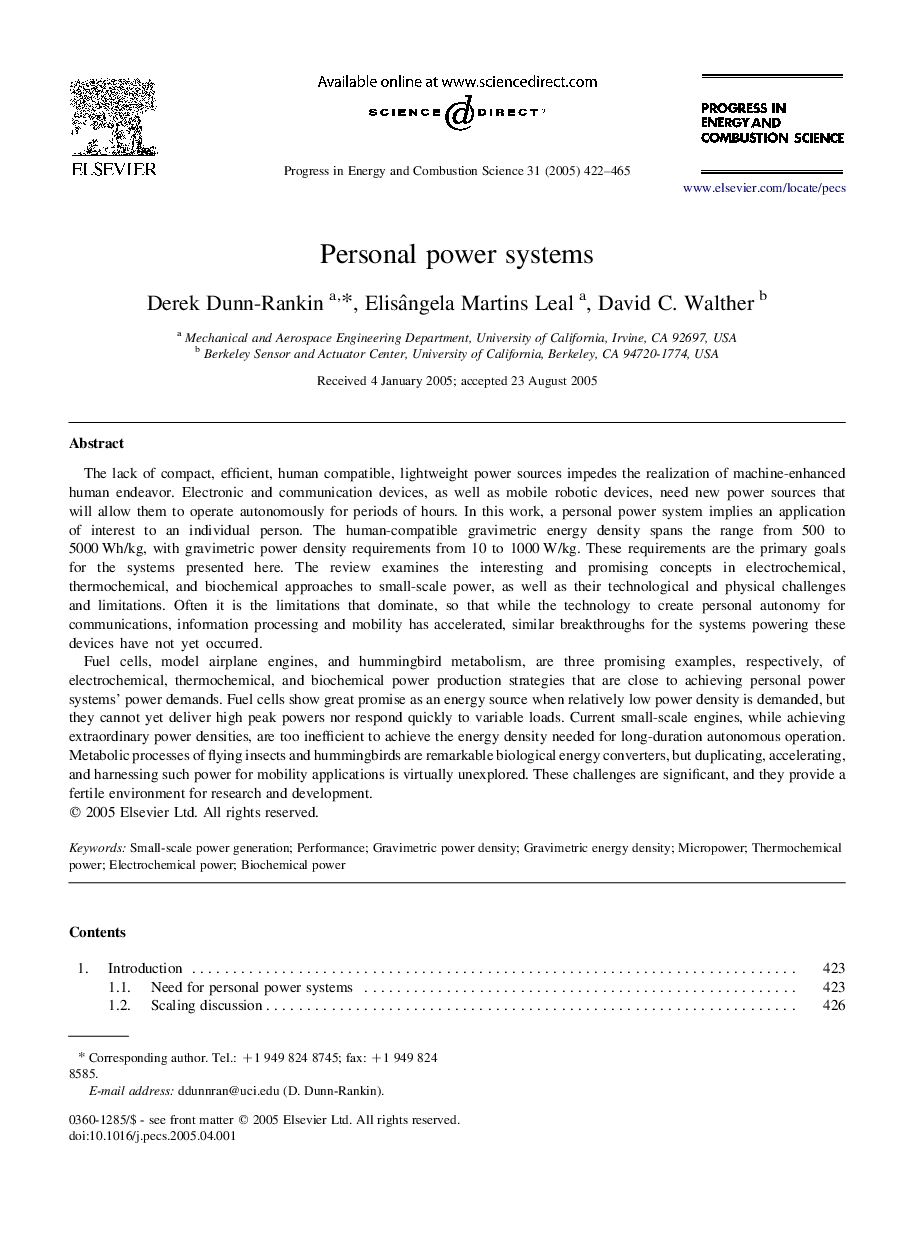| Article ID | Journal | Published Year | Pages | File Type |
|---|---|---|---|---|
| 9637527 | Progress in Energy and Combustion Science | 2005 | 44 Pages |
Abstract
Fuel cells, model airplane engines, and hummingbird metabolism, are three promising examples, respectively, of electrochemical, thermochemical, and biochemical power production strategies that are close to achieving personal power systems' power demands. Fuel cells show great promise as an energy source when relatively low power density is demanded, but they cannot yet deliver high peak powers nor respond quickly to variable loads. Current small-scale engines, while achieving extraordinary power densities, are too inefficient to achieve the energy density needed for long-duration autonomous operation. Metabolic processes of flying insects and hummingbirds are remarkable biological energy converters, but duplicating, accelerating, and harnessing such power for mobility applications is virtually unexplored. These challenges are significant, and they provide a fertile environment for research and development.
Keywords
Related Topics
Physical Sciences and Engineering
Chemical Engineering
Chemical Engineering (General)
Authors
Derek Dunn-Rankin, Elisângela Martins Leal, David C. Walther,
